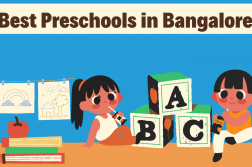Most people study the same way throughout their school years. They open their notebooks and read them over and over again until the words are carved into their memory, and then they hope for the best. This method works very well for some people, but others — no matter how many times they read the text — find themselves drawing a blank when they look at the question paper. This is through no fault of their own, however. People absorb information in different ways so it makes sense that a single method of studying doesn’t work across the board. So if you find that the old memorisation trick isn’t working for your youngster, there’s a three-step solution that could help:
- Step 1: Find the perfect learning style
- Step 2: Match a study method to this style
- Step 3: Experiment until you find the right mix of methods
Step 1: Finding the Right Learning Styles
Simply put, a learning style is the way a student absorbs and processes information. There are several styles, and most people fit into multiple categories. You can easily find the ones that suit your child the best by having them complete an online quiz, but to give you a quick overview, here’s a simple breakdown of each one:
- Visual (spatial): Visual learners are more likely to remember information that’s presented to them in a chart or graph. Subjects like the sciences may come easily to them, as diagrams and figures are often used to represent information.
- Auditory (aural): Auditory learners find it easier to retain information that is read out loud. Literature, especially poetry, tend to cater to their abilites, as the subject material is often read aloud to a particular rhythm
- Verbal (linguistic): Verbal learners are most comfortable with the written or spoken word, and tend to retain information more if they explain it to someone else. They may find subjects that are discussion- or essay-oriented easier to comprehend
- Kinesthetic (physical): Kinesthetic learners like hands-on activity — they understand concepts best when they are able to make models or conduct experiments. Sciences, the fine arts, and other subjects that involve more practical applications tend to be their strengths
- Logical (mathematical): Logical learners find it easier to understand concepts that are broken down into points or steps. Mathematics may be their strong point, as the subject relies heavily on step-by-step processes
- Social (interpersonal): Social learners are strong communicators and retain information better when they collaborate with other people. They may prefer subjects with scope for discussion and group work
- Solitary (intrapersonal): Solitary learners are more private and introspective — they understand information best when they’re left to themselves, as they can place it in a context that makes sense to them personally. They might find subjects that allow for individual thought and expression easier to grasp
Step 2: Investigate Study Methods
Once you and your child have figured out which styles best apply to them, you can explore new study methods that take advantage of these strengths.
Visual learners:
Colour and imagery play a vital role in retention if a child is a visual learner, so the best study methods could include:
- Highlighting, underlining or writing important words or phrases in different colors
- Creating mind maps (here’s a simple guide for those who don’t know where to start)
- Referring to pictures, diagrams or videos instead of text whenever possible
- Drawing a storyboard for subjects like history and literature, which contain an aspect of storytelling, to help understand events in the proper order
Auditory learners:
Sound is a key factor in understanding and remembering information, so auditory learners will find it helpful to:
- Play instrumental music or ambient sounds while studying, and avoid music with lyrics as it may be distracting
- Create mnemonics by giving them a particular rhythm and rhyme or set it to a tune
- Read information out loud as often as possible
- Discuss the topic with their classmates and listen carefully to their responses
Verbal learners:
Verbal learners are particularly strong communicators and place a lot of importance on words. If your child is a verbal learner, they can improve their retention by:
- Talking through the question until they arrive at the solution or explaining the topic to someone else
- Writing practice papers or giving practice presentations
- Creating acronyms and mnemonics to help them remember long lists of information
- Discussing difficult concepts with other people as often as possible
Kinesthetic learners:
Touch and movement is a key part of retention if your child is a kinesthetic learner, so while studying they can:
- Pace or exercise while learning new information
- Create models, conduct experiments, and enact scenarios whenever possible
- Write or draw important information several times
- Take breaks while studying — they may find themselves fidgeting and losing focus otherwise
Logical learners:
Logical learners rely on strong organisation and can streamline their understanding of concepts by:
- Making lists out of the key points in the material
- Breaking events and processes down into individual steps
- Organising information into tables or charts
- Creating a detailed study plan and keeping their workspace tidy
Social learners:
Social learners thrive on interpersonal connection, and can improve their retention by:
- Enacting historical events or scenes from stories with their friends
- Participating in discussions about the topic of study
- Engaging in group study sessions
- Asking for feedback on assignments from their classmates
Solitary learners:
If your child is a solitary learner, they absorb information at their own pace and often find working in groups more of a hindrance than a help. Instead, they can:
- Set goals and objectives to help them tackle large chunks of material
- Make note of topics they find challenging, and either do extra research or bring up their doubts with a classmate or teacher
- Talk through a question or problem until they arrive at a solution
- Set up a clean, quiet space to serve as a base-camp. This will allow them to keep all their study materials in one place and keep distractions to a minimum
Step 3: Mix and Match
Your child can gain the most out of a study session by finding the right mix of methods for them. They should try out different tactics that fit their primary styles of learning until they find the ones that help retain the most information. For some, that might mean retreating to a quiet space to make colour-coded notes and then reading them aloud several times. Others might prefer to discuss a topic in a group, taking turns to read the material out loud. Remember that there’s no ‘right’ way to study — there’s only the way that’s right for your child. Allow them to experiment with their study methods and they’ll soon be ready to face exam time without fear.




